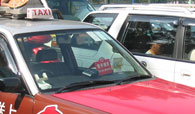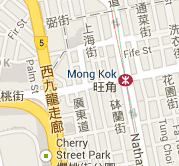FastFacts
Mongkok
Guide
MONG KOK HONG KONG 2025
Welcome to Mong Kok (旺角), the vibrant heart of Kowloon and the world's most densely populated district! This electrifying neighborhood offers everything you need for an authentic Hong Kong experience - from the world-famous Ladies Market and Sneaker Street to incredible street food, modern hotels, and unbeatable shopping opportunities all packed into this compact entertainment hub.
As the undisputed shopping capital of Hong Kong, Mong Kok attracts millions of visitors annually who come to experience its legendary markets, sample authentic Cantonese cuisine, and discover unique bargains. Whether you're seeking luxury accommodations, budget-friendly hostels, or cultural experiences, Mong Kok delivers an unforgettable introduction to Hong Kong's dynamic urban culture.
🌟 2025 Mong Kok Highlights
- Peak Shopping Season: March offers best value with 40% lower hotel rates and optimal weather
- Ladies Market Hours: Daily 12:30 PM - 11:00 PM with best bargaining 7-9 PM
- Hotel Booking Strategy: Book Saturdays vs Fridays to save 60% on accommodation
- Cultural Calendar: Chinese New Year (Feb) transforms markets with special festivities
- Photography Hotspots: Golden hour (4-6 PM) creates stunning urban canyon lighting
Why Mong Kok is Hong Kong's Top Destination
- World-Famous Ladies Market - Over 100 stalls with bargain fashion, electronics, and souvenirs
- Authentic Street Food Scene - From Michelin-starred venues to traditional street vendors
- Unbeatable Transportation - Direct MTR access to all Hong Kong attractions
- Cultural Immersion - Experience real Hong Kong life in the world's densest district
- Shopping Paradise - Electronics, sneakers, flowers, birds, and specialty markets
- Complete Mong Kok District Guide 2025 - Ultimate authority on the world's most densely populated district
- Ladies Market Shopping Guide - Master bargaining strategies and current pricing
- Michelin Star Restaurants Guide 2025 - Tim Ho Wan and fine dining experiences near Mong Kok
- Private Dining & VIP Experiences 2025 - Exclusive restaurants and luxury dining experiences
- Luxury Concierge & VIP Services 2025 - Premium hospitality and personalized assistance
- Mong Kok Hotels Guide 2025 - Budget to luxury accommodation with current rates
- Sneaker Street Guide 2025 - Asia's premier athletic footwear destination
- Traditional Markets Cultural Guide - Authentic Hong Kong cultural experiences
- Electronics Shopping Guide - Tech gadgets and mobile accessories paradise
- Complete Food & Dining Guide - Street food to Michelin stars and cha chaan teng culture
- Transportation Tips - MTR, bus, and taxi options

Shopping AND sightseeing
Shopping is the main reason that most people, locals or tourists come to the district but there is much more than shopping here. With historic buildings, buzzing markets and lots of other things to see Mongkok is as much a sightseeing destination as well as a shopping one. Check out some of the more important things to see on this list.



